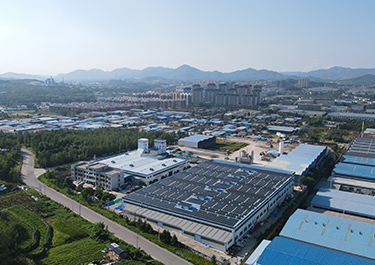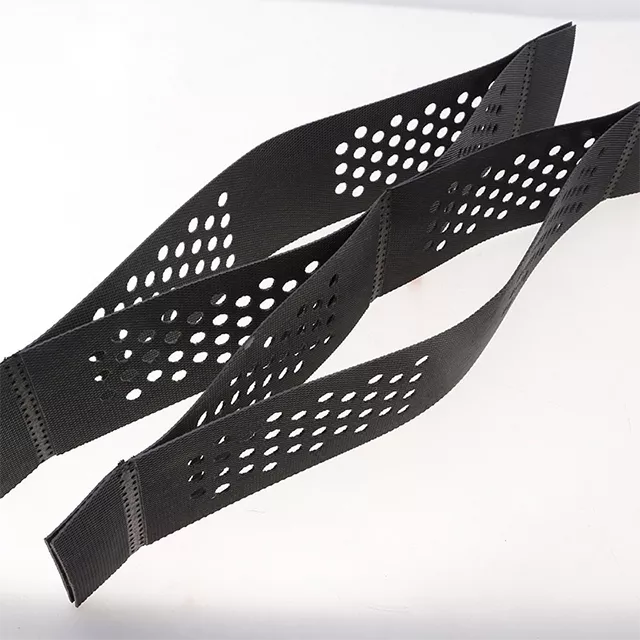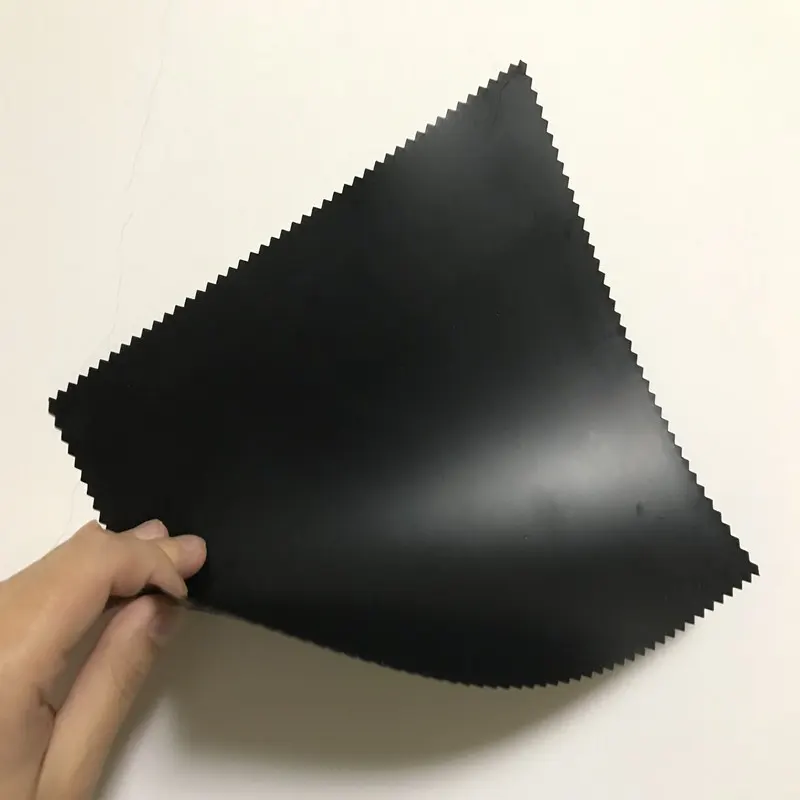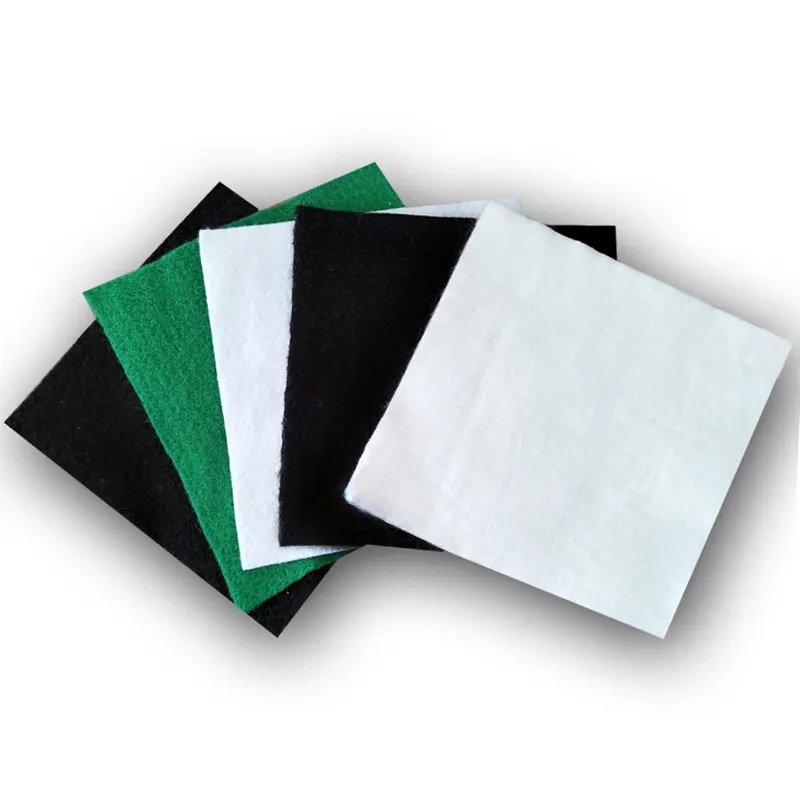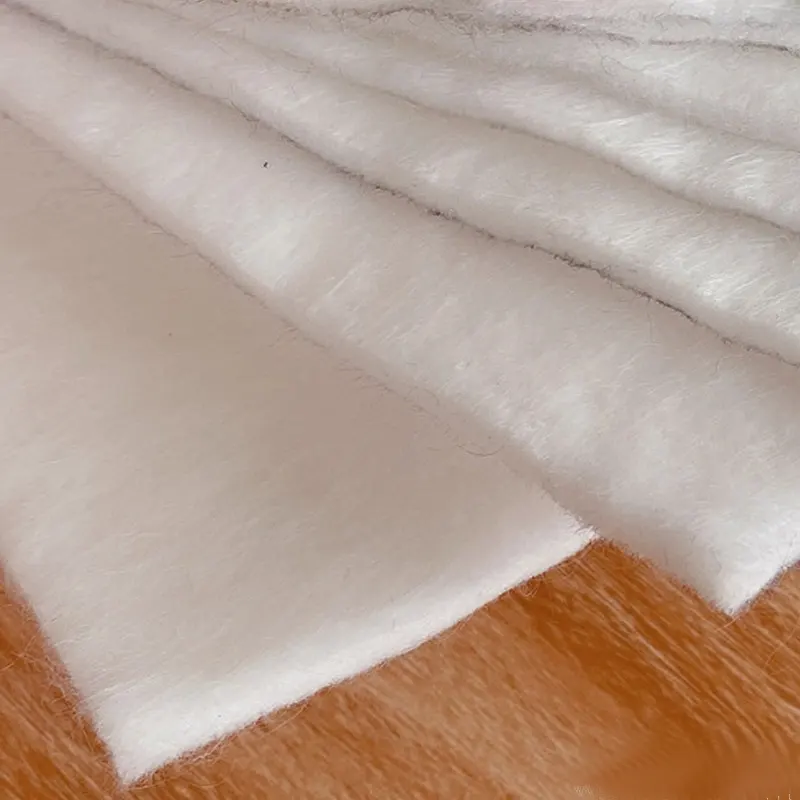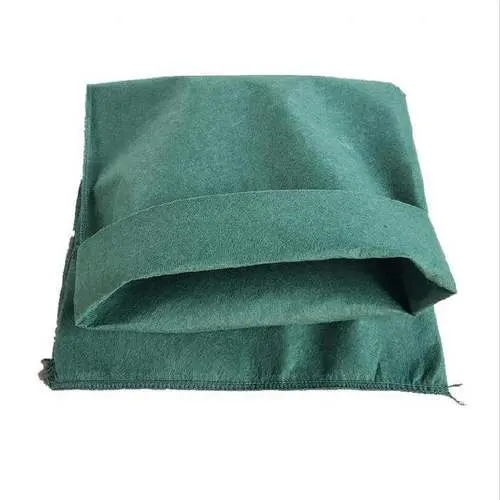Standard steps for the construction of geotextile bag slope protection projects, detailed on-site tutorials
1. Basic Introduction to geotextile bags
Geotextile bags, also known as grass-planting bags or vegetation bags, are made from double-sided ironed, needle-punched non-woven geotextiles made from polypropylene or polyester fibers. They are a highly durable, UV-resistant, freeze-thaw-resistant, acid- and alkali-resistant eco-friendly synthetic material, a new high-tech specialty material. They are UV-resistant, age-resistant, non-toxic, non-combustible, and crack-resistant, achieving a truly zero-pollution environment. Geotextile bags are moisture-resistant and do not absorb moisture, which damages them. They also maintain their shape and are insoluble in polluting liquids, making them a valuable tool for protecting the environment.
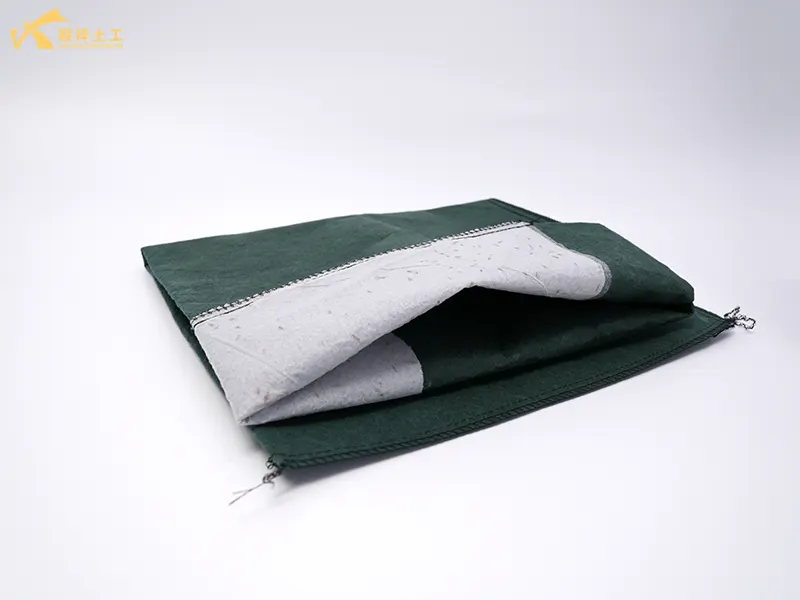
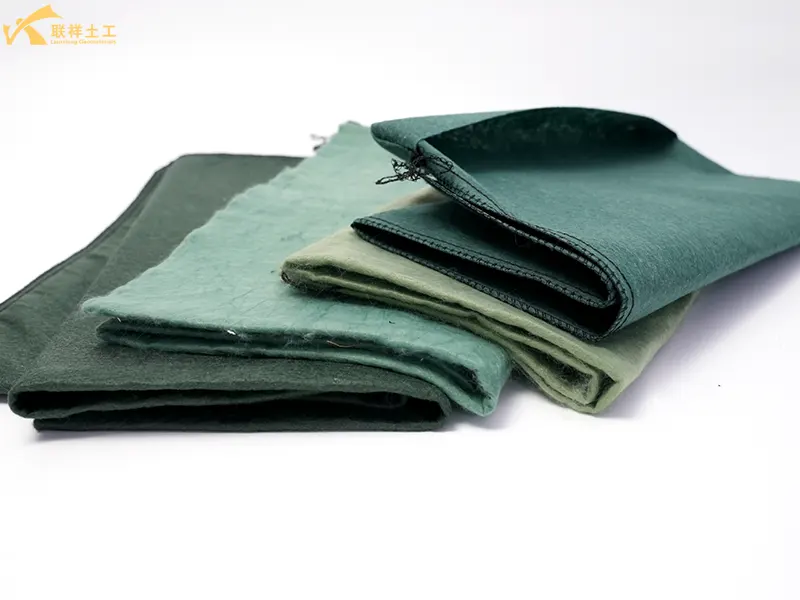
2. Detailed Construction Steps for a Gravel Slope Greening Project
2.1. Site Survey and Preparation
- As you can see, our slope consists of a mixed base of rock and soil with a slope ratio of 1:0.3, making construction conditions less than ideal.
- Preliminary preparations include surface preparation, controlling slope relief to 8cm, pouring foundation beams, and drilling holes in the slope.
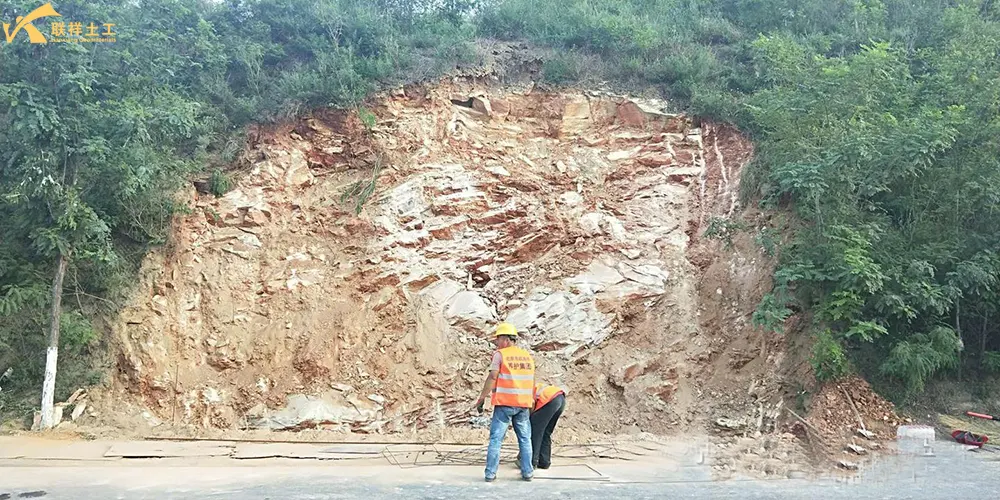
2.2 Material Selection:
- We selected appropriate raw materials. The primary material used in the project was geotextile bag with pre-packaged grass seeds. The advantage of these geotextile bags is that they already contain a layer of grass seeds, so on-site only requires filling and sealing the bags.
- The disadvantage is that the material cost is higher than for geotextile bags without grass seeds. The grass seeds we selected are a mixture of Bermudagrass, Kentucky Bluegrass, and Tall Fescue. This type of grass seed offers a high survival rate and simple maintenance.
- It is suitable for both northern and southern applications and typically sprouts in 7-12 days.
- Foundation Beam Casting.
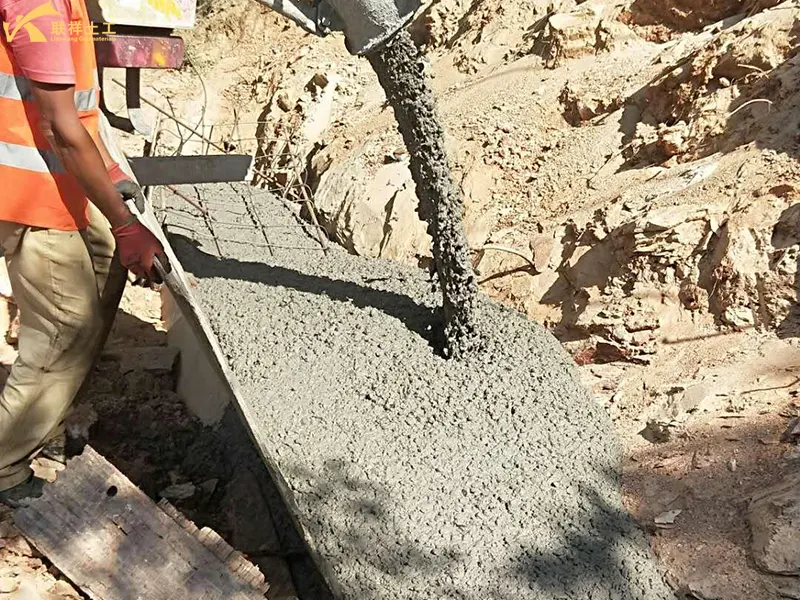
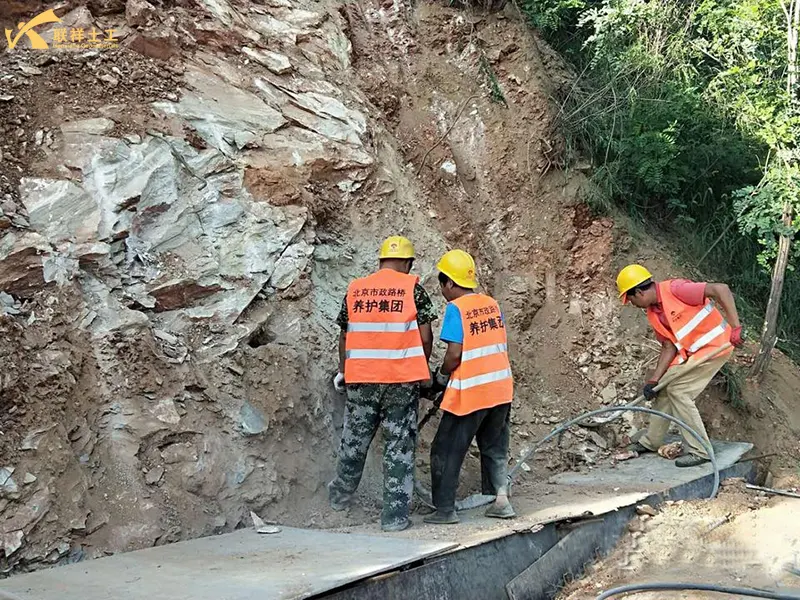
2.3 Anchor Bolt Construction
- For slope anchor bolt construction, the basic steps include positioning, drilling, grouting, and anchor bolt installation.
- Grouting requires a full mortar, with the cement mortar poured to the bottom of the hole, without any hollows inside or fullness outside.
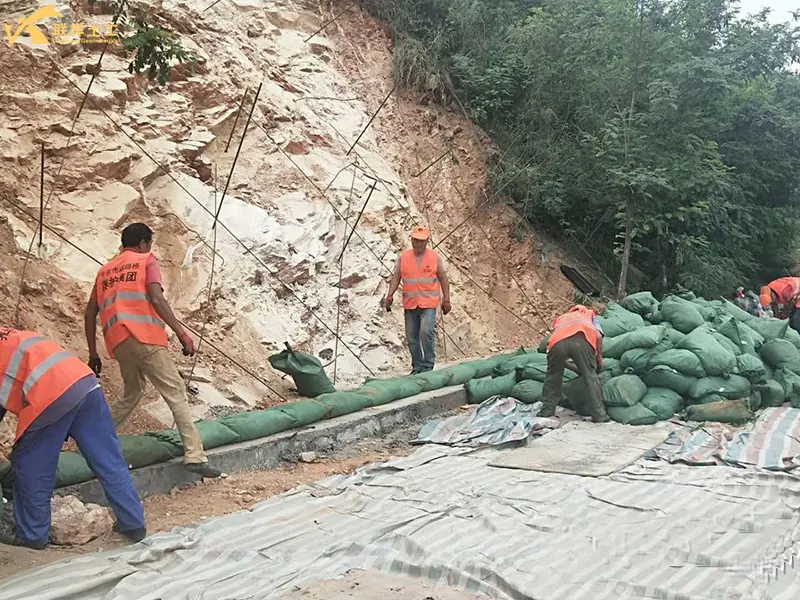
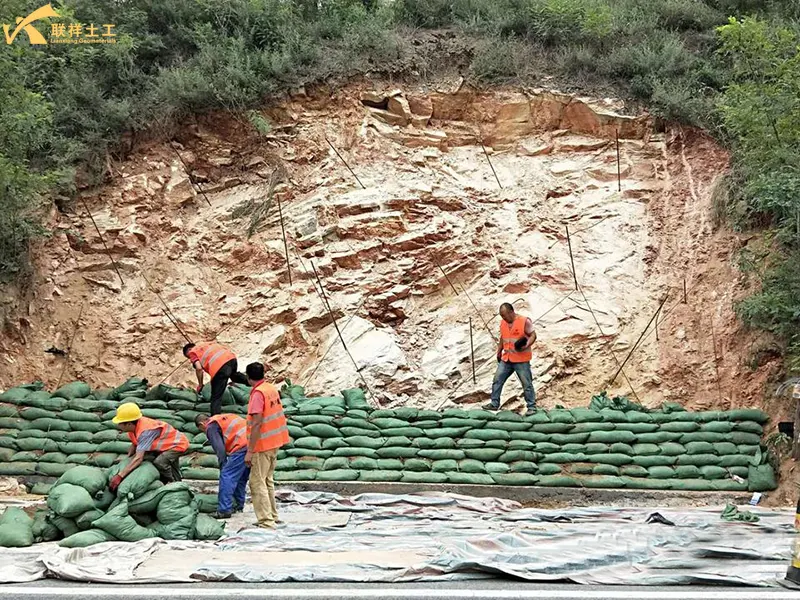
2.4 geotextile bag Filling
- The geotextile bags were selected in standard sizes of 40cm and 80cm. The greening medium for filling the geotextile bags can be mixed at the slope site with 5 parts soil, 2 parts river sand, 3 parts peat moss, and a small amount of compound fertilizer. Be careful not to use weathered rock aggregate as a substitute for the greening medium.
- Geotextile bags can be sealed in two ways: using a handheld sewing machine to seal them in long strips, or using plastic cable ties to seal them in round shapes. We used the latter method for this project.
- The filling level should be 75%-85%. Overfilling will make the bags too rigid, difficult to stack, and prone to slipping. Overfilling will result in poor stability and deformation. After filling, the bags should form a rectangular shape.
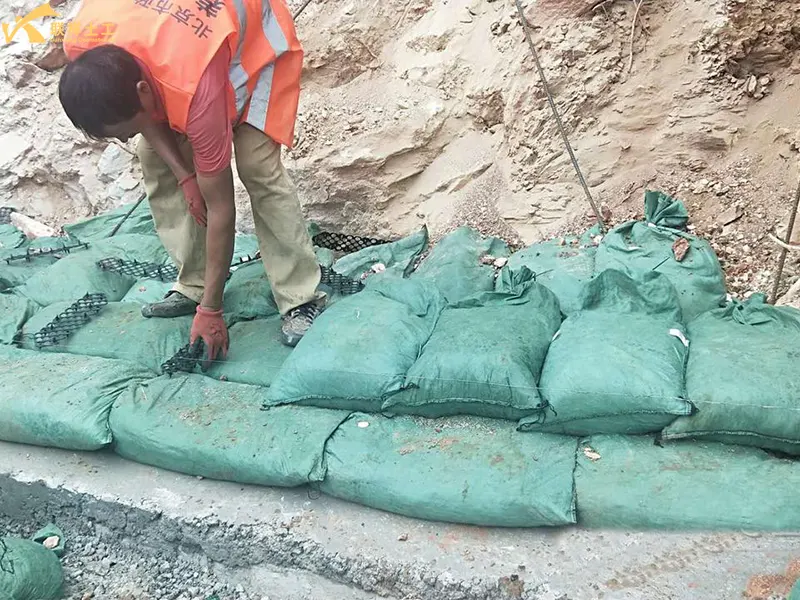
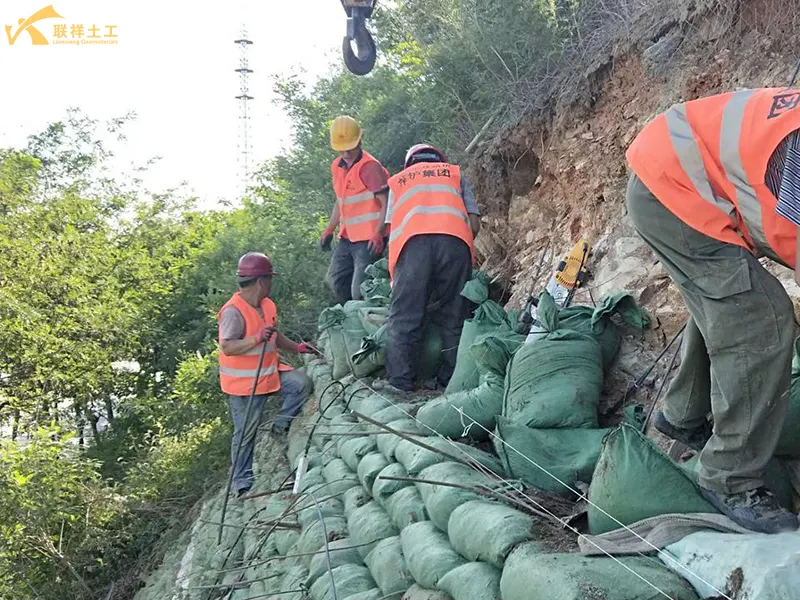
2.5. Stacking the geotextile bags
- When stacking the geotextile bags, they should not collapse or bulge. The slope should be flat, with no more than 5cm of undulation.
- A 12-prong connector is placed between every two adjacent geotextile bags to increase internal friction.
- During construction, approximately 7-8 geotextile bags are used per square meter.
- During the masonry process, drainage pipes (such as soft permeable pipes) should be laid at regular intervals according to the design requirements to drain any accumulated water from the structure. The finished surface should ensure smooth drainage of surface water. Intercepting ditches and drainage ditches may be installed as necessary.
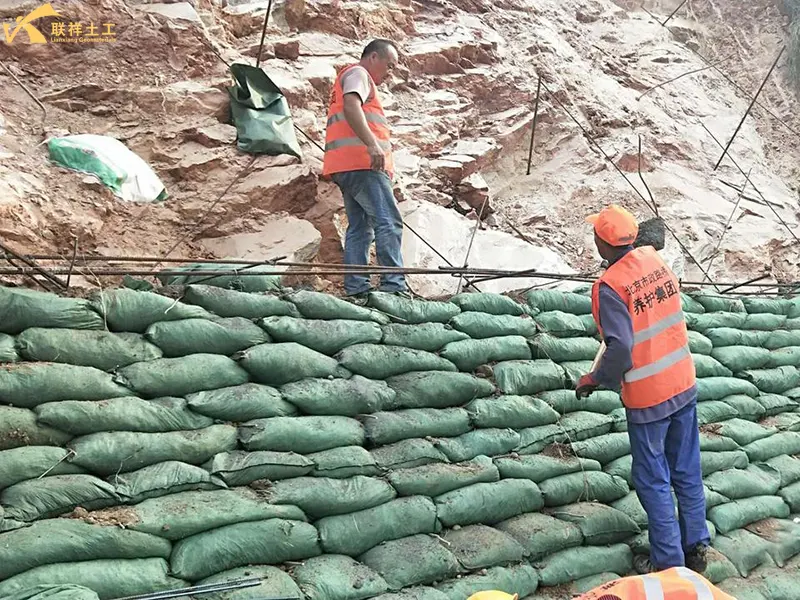
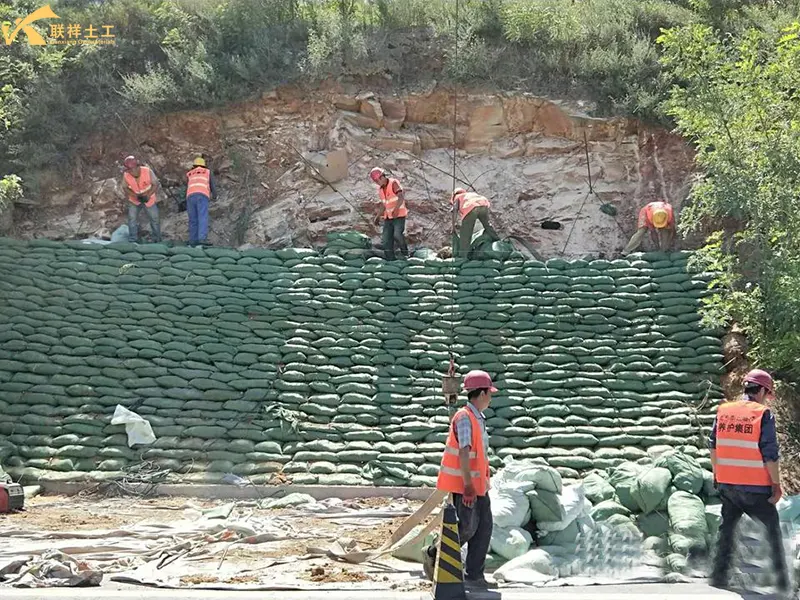
2.6. Hanging and securing the wire mesh.
- When hanging the wire mesh, pull it tight, lay it flat, and secure it to the anchor rods. Ensure the wire mesh is firmly against the surface of the geotextile bags.
- At the top and bottom of the slope, the wire mesh should extend 20 cm beyond the top and bottom of the slope, and trenches should be dug to secure it.
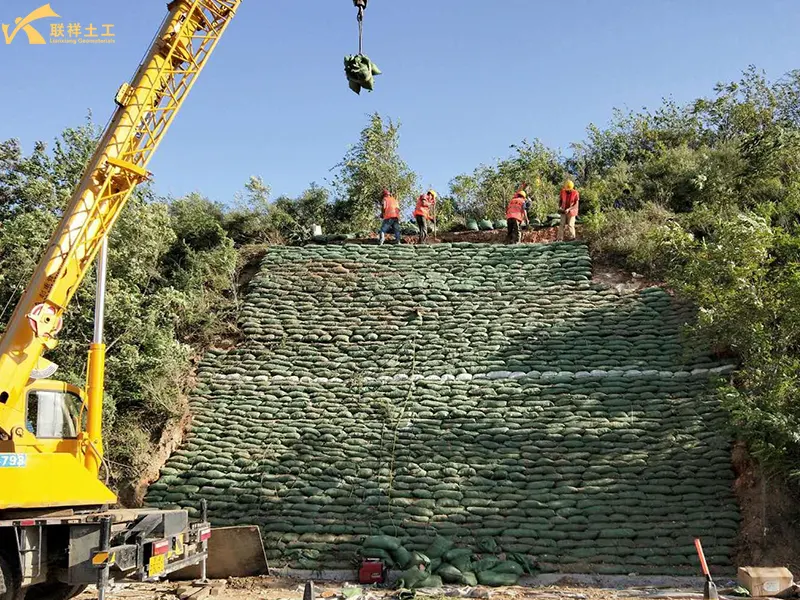
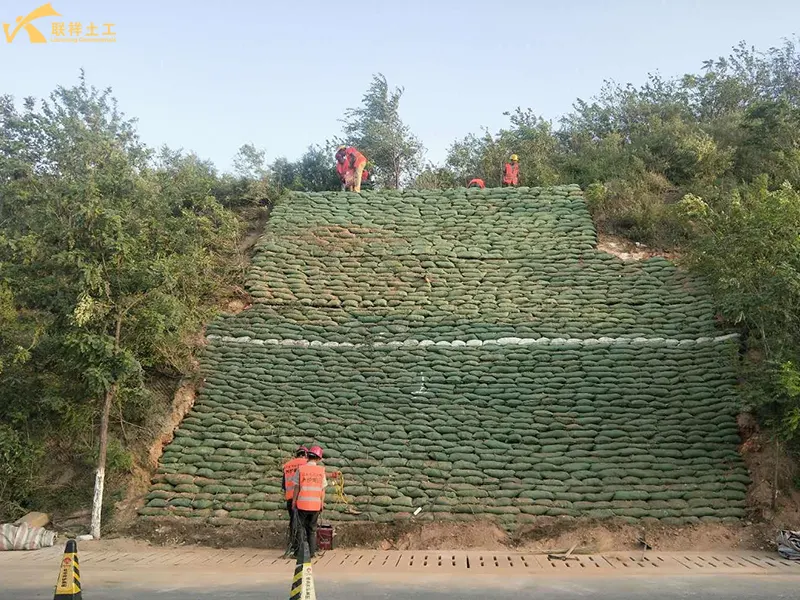
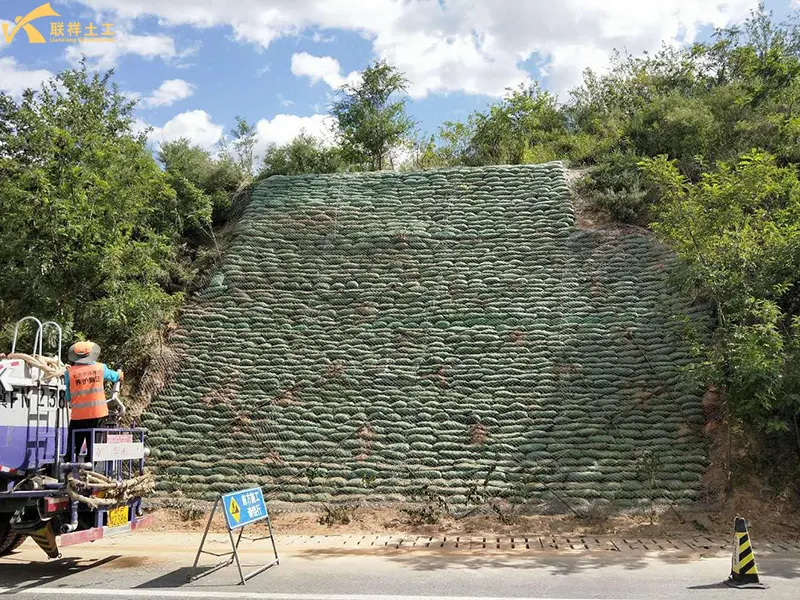
2.7. Maintenance and Management
- Watering: Initial maintenance is crucial. Ensure that the water required for seed germination and seedling growth within the bags is maintained. Sprinkler or drip irrigation is recommended to avoid flooding.
- Topdressing: Apply fertilizer as needed based on plant growth to promote lush vegetation.
- Replanting: Replant any areas that have not survived promptly.
3. Common Applications of geotextile bags
3.1. Water Conservancy Projects and River Management
This is one of the core applications of geotextile bags.
- Riverbank Protection: They replace traditional concrete revetments, preventing soil erosion caused by water erosion while restoring the ecological function of riverbanks and providing habitats for aquatic and terrestrial organisms.
- Dyke Reinforcement: They are used to reinforce embankments of reservoirs, lakes, and canals, improving their stability and erosion resistance.
- Floodway Management: In floodway areas where permeability is crucial, geotextile bags can stabilize slopes without compromising flood discharge.
3.2. Road and Transportation Engineering:
Geotextile bags play a significant role in slope protection for linear projects such as highways and railways.
- Highway/Railway Slope Protection: They are used to stabilize the slopes of cuttings and embankments to prevent landslides and collapses. Their flexible structure adapts well to foundation settlement and deformation.
- Bridge Slope Protection: They protect the slopes on both sides of bridgeheads, reducing the threat of soil erosion to bridge foundations.
- Tunnel Entrance Greening: Protect and green the slopes at tunnel entrances and exits, blending naturally with the surrounding environment.
3.3. Landscape and Municipal Engineering
Geotextile bags perfectly integrate engineering structures with landscape greening.
- Vertical Greening and Eco-Retaining Walls: They can be built into retaining walls at various angles, with flowers and plants planted directly on the walls to create beautiful vertical gardens for use in parks, residential areas, and villa complexes.
- Roof Gardens: They serve as lightweight planting containers for creating rooftop garden micro-topography or retaining structures.
- Square Art Forms: Leveraging their plasticity and greening properties, they can be used to create small landscape features such as flower beds, seating, and sculptures.
3.4. Soil and Water Conservation and Mountain Reforestation
This addresses exposed mountain surfaces caused by human activities such as excavation and mining, or by natural disasters.
- Mine Remediation: They are used for slope stabilization and vegetation restoration in abandoned mining areas, such as tailings dams and quarries.
- Landslide Control: Reinforce unstable landslide bodies and deeply anchor them through plant roots.
- Regreening Exposed Rock Slopes: On rocky slopes difficult to green, geotextile bags provide an initial growth base for plants.
3.5. Geological Disaster Prevention
- Debris Flow Control: Construct energy dissipation and diversion dams in debris flow gullies to mitigate the impact of debris flows.
- Landslide and Rockfall Prevention: Build geotextile bag walls at the foot of prone slopes to provide a buffer and barrier.
3.6. Military and Emergency Engineering
- Camouflage and Protection of Military Facilities: Rapidly construct military fortifications with greening functions, such as bunkers and flood control dikes.
- Emergency Rescue: In the event of disasters such as floods and landslides, sand and soil can be quickly filled in to construct temporary flood control walls or reinforce dangerous slopes, ensuring rapid response.
3.7. Agriculture and Animal Husbandry
- Terraced Field Ridges: Used to reinforce terraced field ridges and prevent soil erosion, they are more ecological and quicker to construct than traditional stone ridges.
- Aquaculture Pond Slope Protection: Used to protect the slopes of aquaculture water bodies such as fish and shrimp ponds, creating an ecological environment closer to nature.
4. Precautions During Construction
- A weak foundation will lead to a shaky foundation: Foundation treatment is fundamental and must be compacted, leveled, and sloped.
- Filling rate is key: A filling rate of 75%-85% is essential to ensure the stability and shape of the bag.
- Staggered masonry is the principle: Through-the-hole joints are strictly prohibited; staggered joints must be used, similar to wall construction.
- Connectors are the "soul": Connectors must be used on every layer and every bag to ensure a cohesive load-bearing structure.
- Drainage is the guarantee: A comprehensive drainage system, from the foundation to the interior, effectively extends the life of the structure.
- Vegetation maintenance is a long-term solution: timely watering and maintenance allow plant roots to quickly replace engineering measures, forming a permanent ecological slope protection.
5. geotextile bag Construction Acceptance Core
| Category | Acceptance Items | Core Standards and Requirements |
| Materials | geotextile bags | Qualified specifications, materials, and UV resistance, no damage |
| Filling | Free of clay or silt, with appropriate particle size and moderate moisture content | |
| Connectors | Sufficient quantity, correct specifications, and properly installed | |
| Structure | Foundation | Compacted, leveled, with inward slope, and smooth drainage |
| Laying | Strictly staggered joints, use of connectors, and correct inward slope | |
| Filling | Filling rate of 75%-85%, with secure and concealed seals | |
| Function | Drainage System | No water accumulation on the slope, and unobstructed water flow from internal drainage pipes |
| Stability | No settlement, displacement, swelling, or collapse | |
| Ecology | Vegetation | Coverage, growth, and species meet design requirements |
| Data | As-Built Documents | Complete and Valid Drawings, Reports, and Records |
6. Advantages of geotextile bags
- Eco-Friendly: Allows for plant growth, integrating "engineering structure" with "natural ecology."
- Durability: UV- and corrosion-resistant, with a long design life.
- Water-Permeable, Soil-Impermeable: Effectively drains water, preventing structural damage from hydrostatic pressure while retaining soil and seeds.
- Easy to Install: No large machinery required, fast construction, and adaptable to complex terrain.
- Flexible Structure: Adapts to minor deformation and settlement of the foundation, resists cracking.
- Cost-Effective: Combines structural protection and greening functions, resulting in low long-term maintenance costs.
7. Cost Estimation Reference (Rough Range)
Note: The following is a very rough market reference price only. Actual prices are subject to specific project inquiries. Units are generally quoted based on the exposed surface area (square meters) of the geotextile bag.
Simple low slope protection (< 3 meters, slope < 45°):
- Cost range: $50-$120/m2
- Includes: standard geotextile bags, backfill, masonry, and basic maintenance.
Medium slope (3-6 meters, reinforced geogrid):
- Cost range: $120-$270/m2
- Includes: reinforcement materials and a more complex drainage system.
High and steep slopes or projects with special requirements ( > 6 meters, vertical green walls):
- Cost range: $270-$450+/m2
- Includes: multi-layer reinforcement, high-standard materials, complex structures, automated maintenance systems, etc.
8. Frequently Asked Questions
8.1. What is the service life of geotextile bags?
A: geotextile bag systems are typically designed to last 50 to 100 years or more, but their functional lifespan will transition from being primarily engineered materials to being primarily planted with roots.
8.2. What auxiliary materials are required for geotextile bag construction?
A: Three types of auxiliary materials are generally used in geotextile bag construction: geogrids, drainage materials, and plant seeds/seedlings.
Geogrids: For steep slopes, geogrids are laid in layers for reinforcement.
Drainage materials: Drain pipes (such as flexible permeable pipes), geotextiles (for filtration), crushed stone (for blind ditches), etc.
Plant seeds/seedlings: If you are not using vegetated geotextile bags, you will need to purchase seeds, shrub seedlings, etc. separately.
8.3. What are the maintenance costs for geotextile bag projects?
A: Frequent watering is required initially, which involves water trucks and labor costs. To ensure the survival and growth of vegetation, regular fertilization and reseeding of sparse areas are necessary. The maintenance period is typically 3-6 months, or even longer, and this cost must be fully considered in the budget.
8.4. What machinery and equipment are required for geotextile bag construction?
A: Earthmoving machinery: Excavators and loaders (for foundation excavation and filling). Compacting Machinery: Small tamping machine (used for compacting the foundation and patting the bag). Transport Machinery: Dump trucks, wheelbarrows, etc. Landscaping Machinery: Soil seeders, watering trucks, etc.
9. Conclusion:
The construction process of geotextile bags is crucial to their ultimate effectiveness and long-term stability. Only by following standard construction procedures can the geotextile bag project be both safe and stable while achieving the desired ecological greening effect. Furthermore, acceptance inspection is equally important throughout the entire geotextile bag construction process, serving as the project's second line of defense. Acceptance inspection for geotextile bag construction is a systematic process that occurs before, during, and after construction to ensure the project ultimately achieves the stability, functionality, and ecological benefits required by the design.
Written by
SHANDONG LIANXIANG ENGINEERING MATERIALS CO., LTD.
Kyle Fan
WhatsApp:+86 139 5480 7766
Email:admin@lianxiangcn.com
Contact
-
WhatsApp
-
E-MailE-Mail:admin@lianxiangcn.com
-
WeChatWeChat:18554180188

